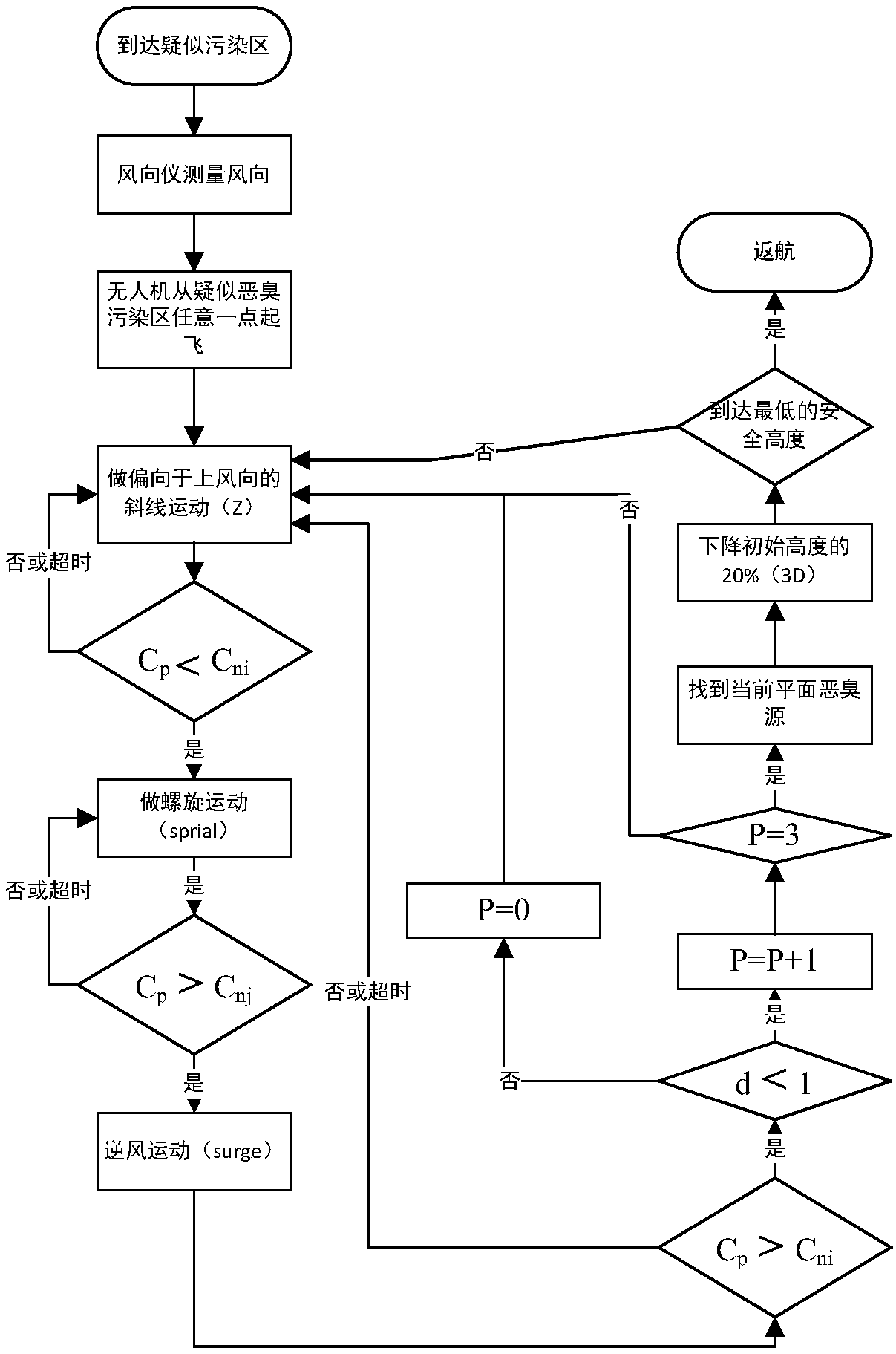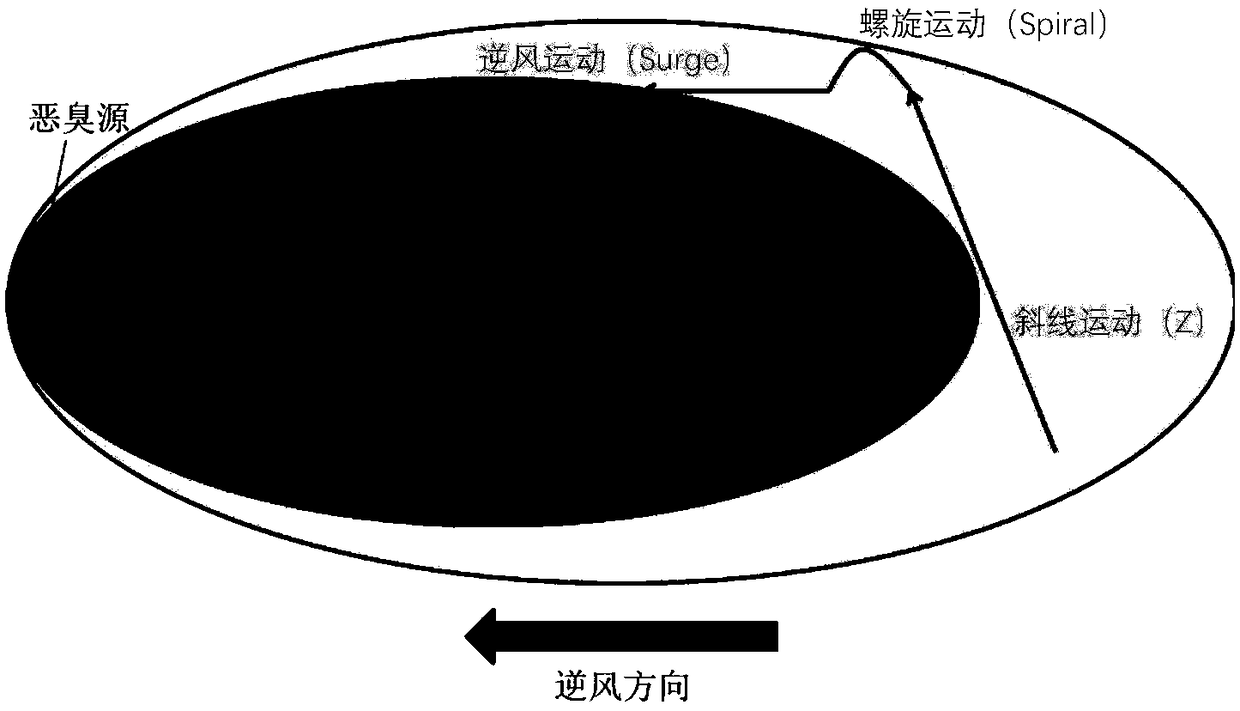A method for tracing odor of unmanned aerial vehicle based on 3D_Z_spiral upwind algorithm
A technology of unmanned aerial vehicle and odor, applied in the direction of calculation, special data processing application, measuring device, etc., can solve the problems of traceability movement path deviation, inability to fully obtain the information of odor source field, etc.
- Summary
- Abstract
- Description
- Claims
- Application Information
AI Technical Summary
Problems solved by technology
Method used
Image
Examples
Embodiment Construction
[0021] like figure 1 As shown, a UAV odor traceability method based on the 3D_Z_spiral headwind algorithm specifically includes the following steps:
[0022] Step 1: According to the feedback from the environmental monitoring department or the masses, find out the suspected odor pollution areas. The areas of suspected odor pollution sources are usually set in areas such as paper mills, farms, feed mills, chemical plants, and slaughterhouses.
[0023] Step 2: Use the anemometer to measure the wind direction of the suspected odor-polluted area, and the multi-rotor UAV will search for the source of the odor against the wind to ensure the efficiency of odor traceability.
[0024] Step 3: The UAV takes off from any point in the suspected odor pollution area. The UAV first performs a diagonal movement (Z) in the upwind direction, and traverses the entire odor source pollution area to obtain sufficient source gas concentration data. The gas sensor reads data once per second, and th...
PUM
 Login to View More
Login to View More Abstract
Description
Claims
Application Information
 Login to View More
Login to View More - R&D
- Intellectual Property
- Life Sciences
- Materials
- Tech Scout
- Unparalleled Data Quality
- Higher Quality Content
- 60% Fewer Hallucinations
Browse by: Latest US Patents, China's latest patents, Technical Efficacy Thesaurus, Application Domain, Technology Topic, Popular Technical Reports.
© 2025 PatSnap. All rights reserved.Legal|Privacy policy|Modern Slavery Act Transparency Statement|Sitemap|About US| Contact US: help@patsnap.com


